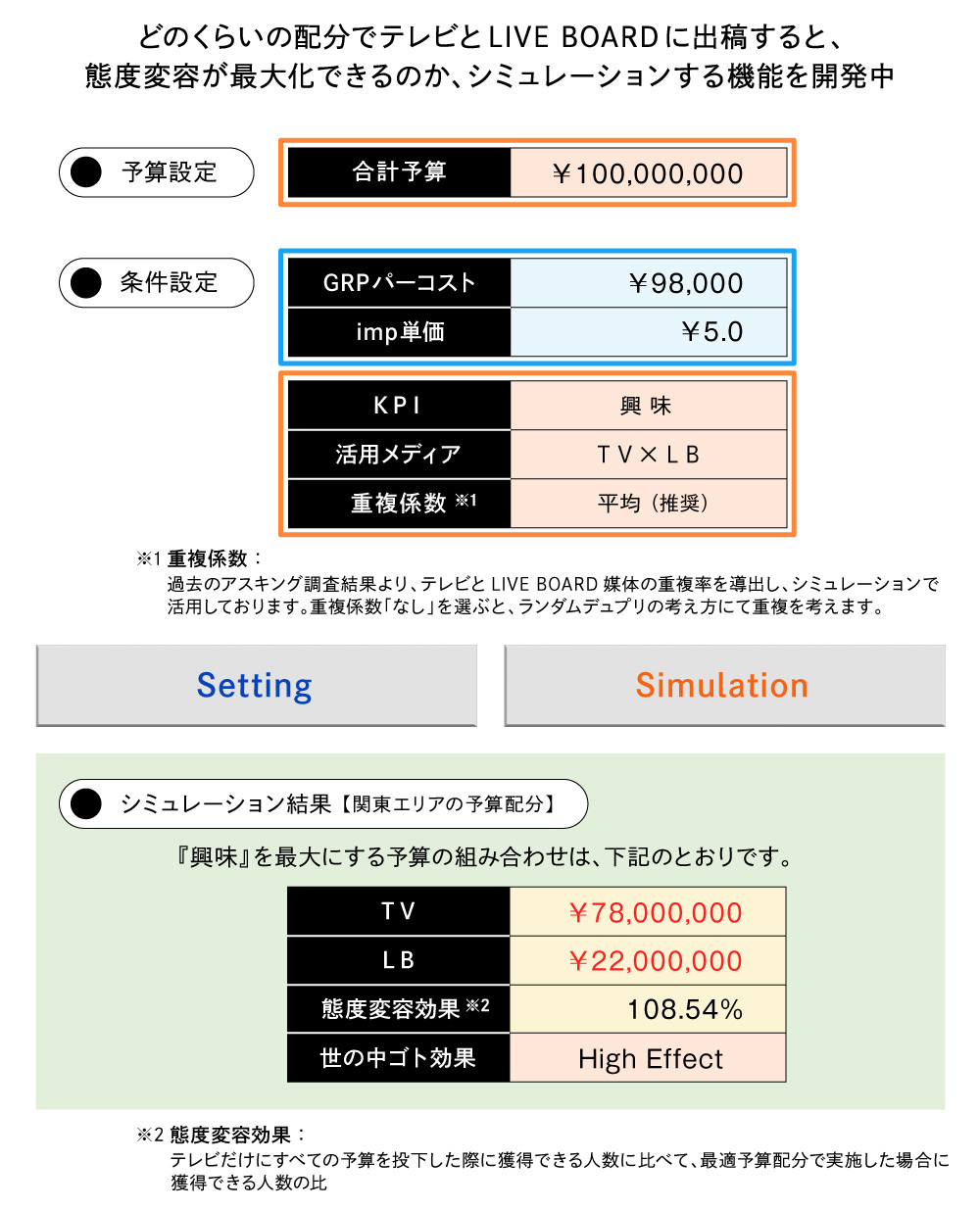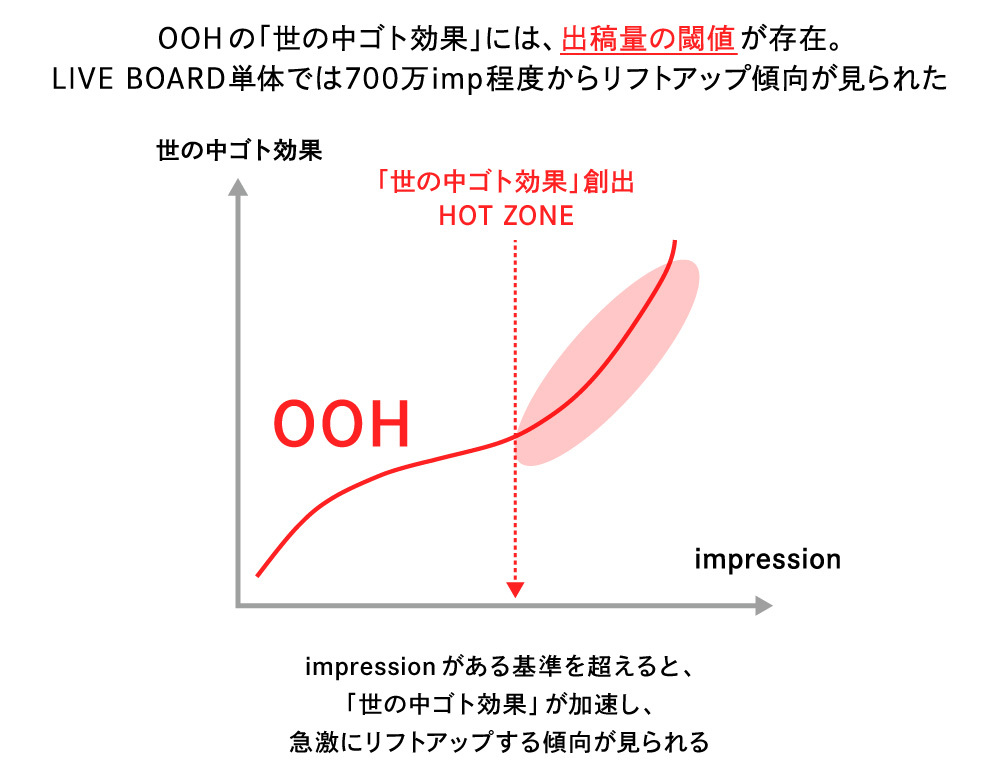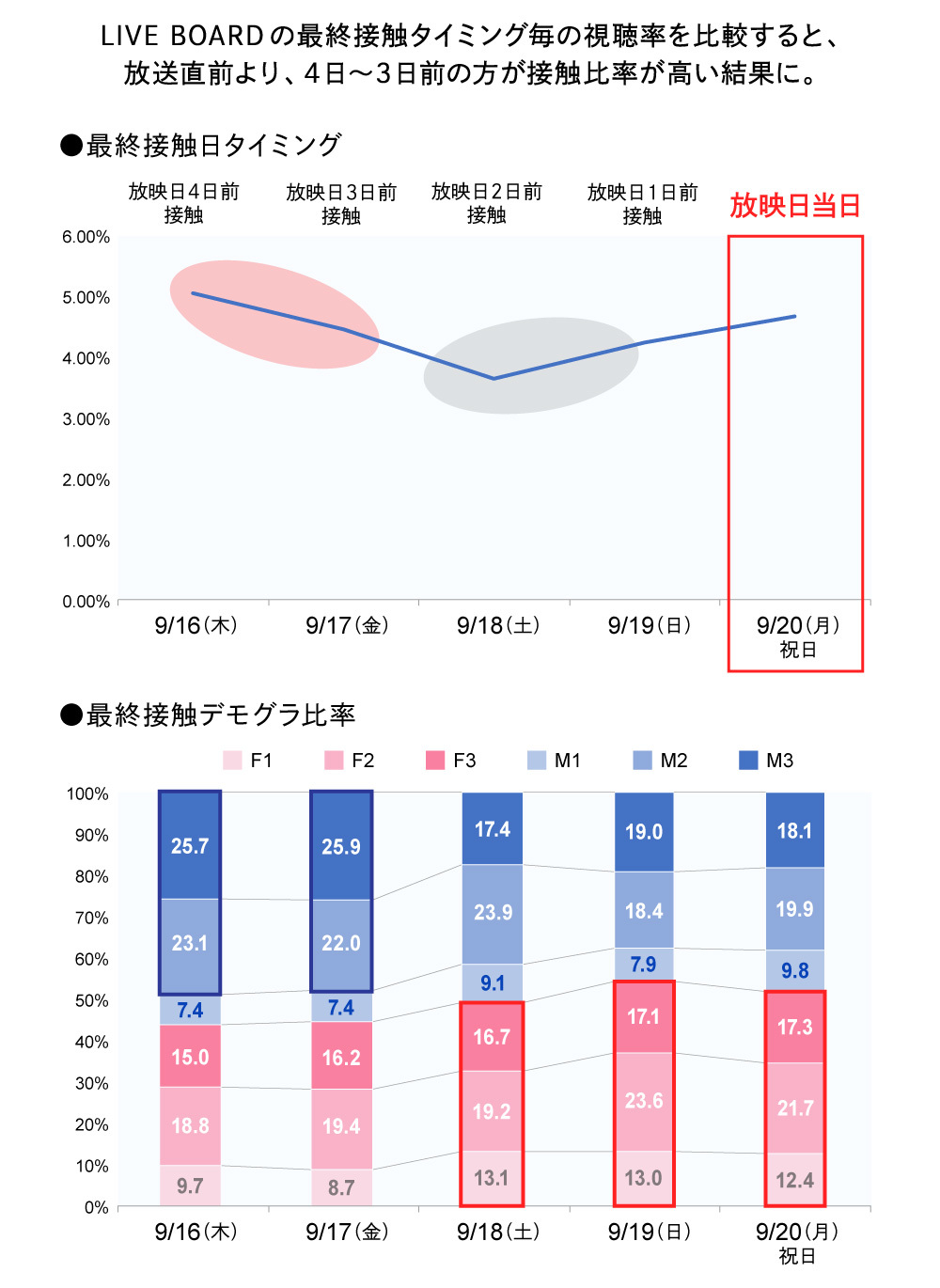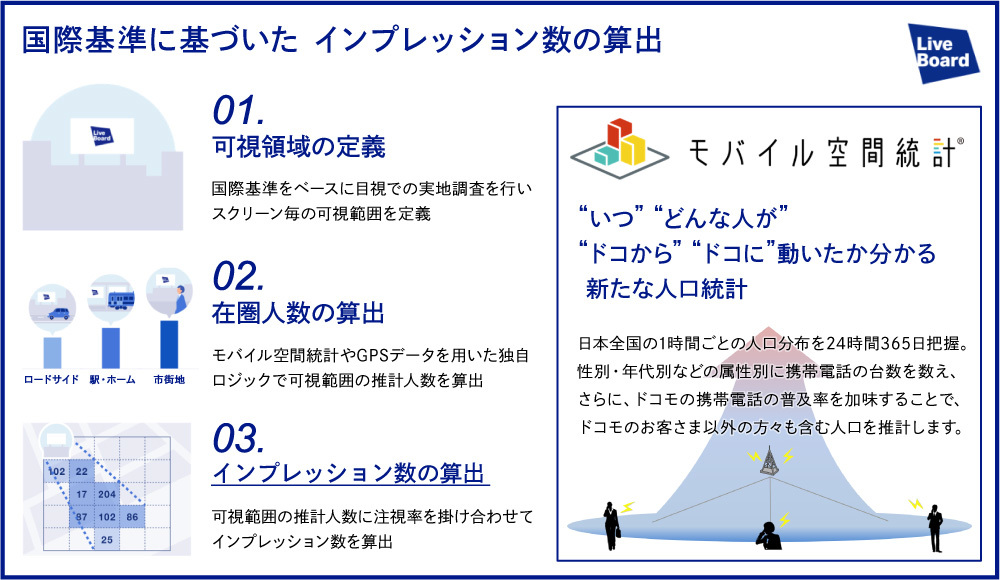OOH (Out Of Home) handles advertising exposure outside the home, such as street billboards and train advertisements.
Traditionally, OOH's effectiveness was difficult to measure, making reach and circulation metrics—indicating "how many people could potentially be exposed"—key indicators. However, we strongly feel that the actual purpose of OOH placements is increasingly shifting toward campaigns aiming for effects that cannot be explained by reach and circulation alone. These include objectives like "making it a topic of conversation in society" or "effectively changing consumer attitudes through creating buzz."
Based on the hypothesis that OOH possesses this "societal impact effect," Dentsu Inc. launched an effectiveness verification project. We successfully visualized this "societal impact effect." From there, we developed a tool (beta version) that supports effective planning centered on attitude change. We aim to fully launch this initiative in 2022, working towards building a practical solution that can be effectively utilized.
Part 1: OOH Holds Hidden Value – The "Societal Impact Effect"!
Part 2: Prove OOH's "Worldly Impact Effect"!
In the final Part 3, we'll discuss how OOH's "Societal Impact Effect" will transform the future of planning.
【Participants】
Haruki Kobayashi: After developing "OOH LIQUID," a method for verifying the effectiveness of OOH advertising using location data at the OOH Division, he was seconded to LIVE BOARD. At LIVE BOARD, he supports the development of planning tools utilizing Docomo data (Mobile Spatial Statistics®※1 + other location data, etc.) and is responsible for data-driven planning and effectiveness verification.
Hiroshi Fukuda: Senior Solution Director, 3rd Integrated Solutions Bureau. Responsible for developing and planning solutions across various media. Also serves as a driving member of the current OOH media "Real-World Impact Effect" project.
Kousuke Kasuya: Media Planner, Out-of-Home Media Division. He handles everything from media planning to the verification phase, primarily for OOH media. He has a proven track record of sales for LIVE BOARD across a wide range of industries and is pioneering the future of OOH every day.
and is pioneering the future of OOH daily.
Akane Furuike: After working as a Planner in the OOH Division, she is now involved in developing integrated on/off planning and effectiveness verification schemes utilizing the "TV × Digital × OOH" triple media approach at the Data & Technology Center.
※1 "Mobile Spatial Statistics" is a registered trademark of NTT DOCOMO, INC.
Goals Achieved Through People-Centric Planning
Fukuda: The LIVE BOARD verification project introduced in Part 2 proved OOH's "societal impact effect." Going forward, we believe a key theme will be strategically incorporating this "societal impact effect" right from the planning stage.
Kobayashi: That's right. While personalized digital ads optimized for individual interests and preferences have been highly valued in recent years, we were actually able to quantitatively demonstrate that "what society (other people) thinks" significantly influences decision-making flows, such as purchasing. We would be delighted if, going forward, OOH advertising, which can deliver this "societal impact effect," is increasingly considered during media selection.
Fukuda: If planning focuses on effectiveness, it requires a "people-centric" approach—asking "How can OOH placements drive specific attitude changes in specific audiences?" rather than relying solely on simple reach and frequency metrics (number of people reached/number of times reached).
I understand that by utilizing the norm values (statistical benchmarks from surveys conducted using the same methodology) within the LIVE BOARD verification platform, we've taken a step closer to this people-centric planning. Could you elaborate on the details?
Kobayashi: We're currently developing the "Societal Impact Planning Tool Beta" on LIVE BOARD. This tool simulates how allocating budgets between TV and LIVE BOARD within an overall media budget maximizes attitude changes (such as service awareness and feature understanding). Honestly, there's still room to improve accuracy, but just being able to provide a benchmark represents a significant step toward people-centric planning.

The attitude change metrics that can be set as KPIs include "service awareness," "feature understanding," "interest," "usage intent," and "store visits," enabling unprecedented "people"-centric OOH planning. Furthermore, we can now quantify estimates of how much attitude change effect can be lifted with an optimized budget allocation.
These simulation results should inherently vary based on the product/service industry, category, market penetration, or demographics like gender, age, and lifestyle. Moving forward, we aim to refine this tool into a more sophisticated one by accumulating more case studies and conducting repeated verification.
Fukuda: With the addition of this new metric—"societal impact effectiveness"—to traditional planning, OOH planning is likely to draw significant attention. As 2022 begins, I have a strong feeling this year could become the "first year of planning evolution" for OOH media.
The creative potential to drive "Societal Impact Effect"
Fukuda: Kasuya, as someone who interacts with clients daily in sales, how did you feel about these verification results?
Kasuya: This time, we were able to visualize the benchmark for driving the "Societal Impact Effect," which we had previously grasped intuitively, as "an ad volume of around 7 million impressions." I believe clients will also recognize its value. The concept of the "Societal Impact Effect" has significant potential and feels convincing. Going forward, we want to build on this by accumulating more facts and building momentum.
Furuike: I also sensed great potential. However, I think there might be cases where "7 million impressions" doesn't align with the budget. Even when reducing the impression scale, I want to prove that we can still generate "world-affecting impact" through creative combinations—like effective creative, strategic area targeting, and timing adjustments.

Fukuda: Exactly. Beyond impression-based planning, we mustn't forget that creative is also a crucial factor in advertising effectiveness. The OOH campaign featuring Yurina Hirate from Digital Hollywood University is a prime example of how creative power scaled awareness. I believe there's still significant room to explore the synergy between creative and location (OOH media).
Kasuya: Mr. Furuike's phrase "ingenious combinations" really resonated with me. By combining not only creative elements, area, and timing, but also OOH media beyond LIVE BOARD, and maximizing the "world-changing effect" through optimal allocation, I believe it will revolutionize OOH planning.
OOH planning will change through "world-changing impact"
Fukuda: Speaking of people-centric planning, there's NTT Docomo's location data, like " docomo data square™, " which can measure effectiveness from consumers' media exposure to actual purchasing behavior. Mr. Furuike, who oversees this, is likely conducting deeper analysis. Among the cases you've worked on, were there any interesting examples?
Furuike: In one case for a broadcaster, we evaluated how exposure to LIVE BOARD influenced program viewership. We found that exposure slightly earlier (3-4 days prior) had a greater impact on boosting program ratings compared to exposure just before the broadcast (1-2 days prior).
Analyzing this result from a "person" perspective revealed that, especially during the pandemic, the attributes of "people going out on weekdays" and "people going out on weekends" were completely different. Weekdays tended to have more "M2-M3 demographic (salarymen/office workers)", while weekends had more "F1-F2 demographic (young women)". This means that even at the same location (OOH media), the reachable demographic differs.
Since the program's target audience was the "M2-M3 demographic," we believe that even if advertising was placed slightly before the broadcast (i.e., on weekdays) when the M2-M3 demographic was more prevalent (not necessarily immediately before the program), it likely contributed to program viewership.
It's easy to assume that "advertising right before the broadcast will yield better results." However, for OOH planning targeting the KPI of "TV program viewership," this analysis revealed a new insight: beyond the recency effect of "immediately before broadcast," the hidden variable of "which days of the week the 'people' matching the TV program's target demographic are out and about" is crucial. This was uncovered through a people-centric analysis.
This perspective isn't limited to this specific case; it could also apply to low-involvement products like convenience store or supermarket items. Therefore, we aim to further deepen our people-centric data science approach going forward.

Fukuda: That's fascinating. I think there are many things in OOH that are often theorized as "somehow correct." But by leveraging LIVE BOARD and accumulating new empirical data, we can uncover unexpected discoveries. It seems like we can also improve the precision of effective planning.
Kasuya: I agree. Traditional OOH planning often relied on intuition or gut feelings, and sometimes involved discussions using different metrics. Creating a "common language" backed by facts—specifically, "person-centric attitude change"—is highly significant in addressing that.
Fukuda: Exactly. Approaching OOH planning from the perspective of "how to drive attitude change centered on people" will lead to healthier discussions, moving away from vague "just OOH" arguments. I also think it will invigorate creative efforts to develop more engaging ideas and mechanisms focused on people.
Kasuya: When considering people-centric planning, I think LIVE BOARD's strength lies in its customizability—not just targeting, but also areas and time slots. Unlike fixed Monday-Sunday schedules or set slots for first/second halves, LIVE BOARD offers flexibility in areas, dates, and times to efficiently reach the intended audience. This flexibility was previously absent in traditional OOH.
Kobayashi: Exactly. The flexibility in start dates and ad submissions, similar to digital media, is another appeal of LIVE BOARD. We can take a digital-like approach, focusing on "who to target and how to maximize impact" based on client needs. We can also visualize and execute the strengths of OOH as a mass medium, like its "worldly impact."
We want to refine this into a more convenient, granular solution while helping our clients leverage these strengths.
Fukuda: In 2022, let's work together to spread the value of OOH's "world-affecting impact." And let's make outdoor advertising more interesting.

















